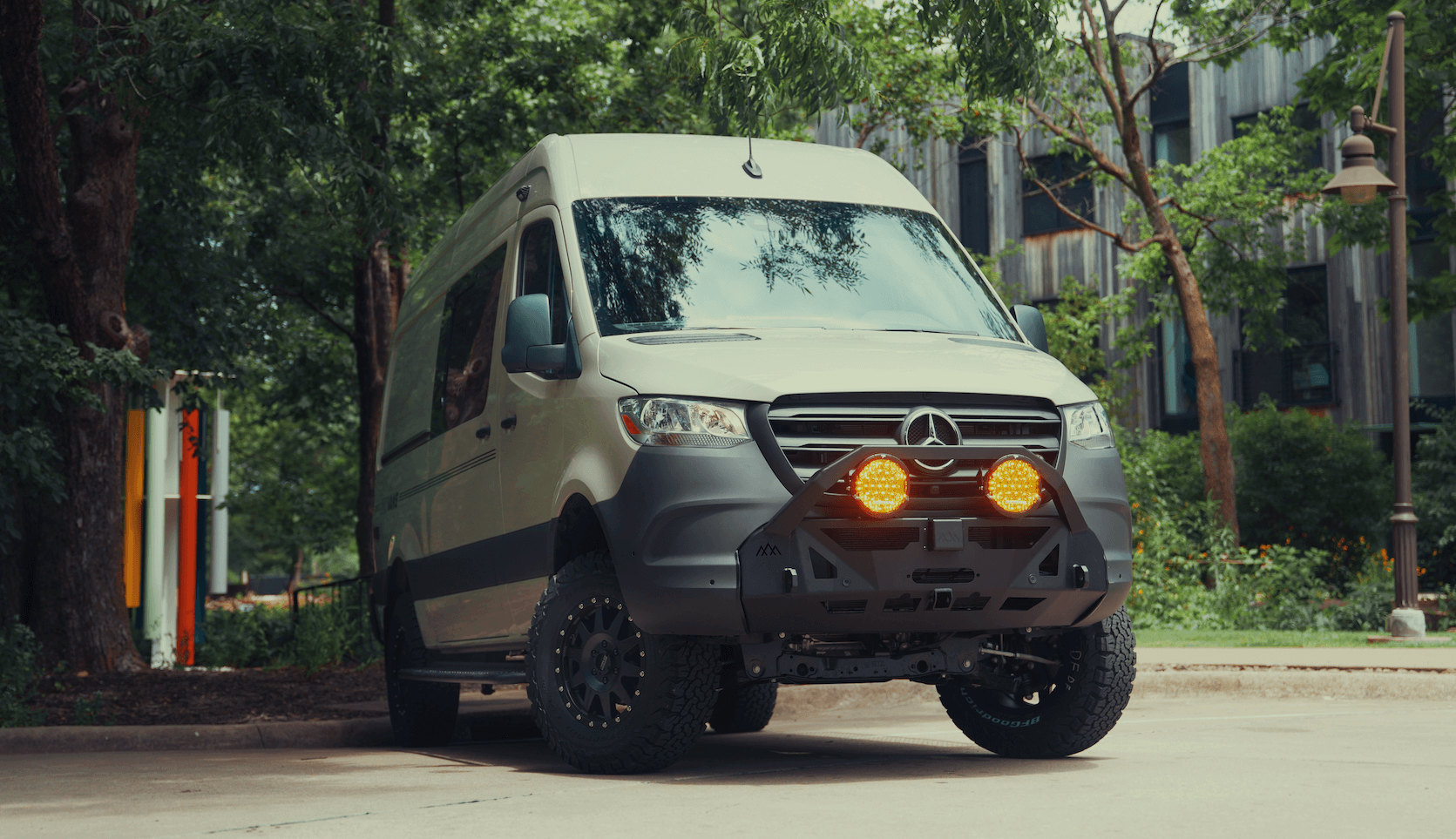Recreational Vans

A roof box for a camper van frees living space by moving bulky, irregular gear out of the cabin. Think camp chairs, soft duffels, seasonal clothing, sleeping kits, or wet items you do not want near bedding. Most hard shell boxes range from roughly 300 to 600 liters. Longer, slimmer boxes suit skis or awnings, while taller, mid length options swallow puffy gear and totes. Look for smooth, tapered lids that manage airflow and crosswinds. On tall vans, reduced turbulence matters for comfort, noise, and fuel cost.
Most premium boxes use UV stable ABS or a reinforced composite lid and base. Stiff shells resist flex that can compromise latches and weather seals. Weight matters because every pound up high affects handling. Compare internal usable length and the hinge articulation. A box that opens widely makes packing less like a puzzle and reduces strain on a step stool or ladder. Dual side opening is valuable on camper vans since curbside loading can vary from campsite to city street.
Before selecting a roof box, confirm three numbers: the roof’s dynamic load rating, the rack or crossbar rating, and the box weight plus cargo. Dynamic load is what matters while driving. Static load is higher when parked, but it does not govern travel safety. Crossbar spacing also matters. Many boxes need about 24 to 36 inches between bars to distribute weight and avoid lid interference at full open.
Most boxes mount with clamp systems or T slot hardware that interface with common crossbars. Tighten to spec so the clamps do not deform the bar or crush the box base. After installation, measure overall height from ground to the highest point of the box. Add a comfort margin for tree limbs, garage entries, and drive throughs. This check becomes more critical with high roof vans. If your roof carries solar, a fan, or a satellite dish, map airflow and clearances. The lid should open without contacting an awning case or roof rails, and the box should not shade solar panels more than expected.
A streamlined roof box can reduce the penalty in noise and fuel compared with a square cargo pod, but any add on up top increases frontal area and drag. Expect a modest decrease in miles per gallon on gas or diesel vans and a visible range hit on electric vans at highway speeds. Balanced packing minimizes sway. Keep heavy items low inside the box and centered over the bars. Use soft bags instead of rigid bins to shape around hinges and maximize volume.
A roof box shines when interior layouts prioritize sleeping and galley space over overhead cabinets. It also helps keep muddy gear outside a clean living zone. For tall users, moving puffy items up top can preserve headroom. If you carry bikes on the rear and water up front, a roof box can rebalance weight closer to the center. Plan holistically: rack system, box, awning, lighting, and any roof electronics must coexist and service should remain simple. A good plan leaves room for future solar expansion or a powered vent upgrade without rework.
You want more storage without sacrificing safety, efficiency, or roof system harmony. Our team designs the full roof package to protect your vents, solar, and awning while maximizing usable volume and quiet ride quality. We can pair the right crossbars with a low noise fairing, set ideal bar spacing, and mount your roof box so it clears side doors and accessory lighting. If a full interior build is underway, we integrate the roof plan early to preserve balance and service access.
Tell us how you travel and what you carry. We will design and install a roof rack and box that fit your camper van, confirm height and load limits, and deliver a quiet, clean result that is ready for the road. Fill out the form and let us blueprint your storage upgrade.
Ready to add secure roof storage and protect your solar, vents, and awning with a clean, warrantied install? Talk to OZK Customs. We design and mount roof racks, boxes, and accessories that fit your van, your payload, and your travel style. Book a build consult now.
ADDRESS:
6159 E Huntsville Rd, Fayetteville, AR 72701
PHONE:
(479) 326-9200
EMAIL:
info@ozkvans.com